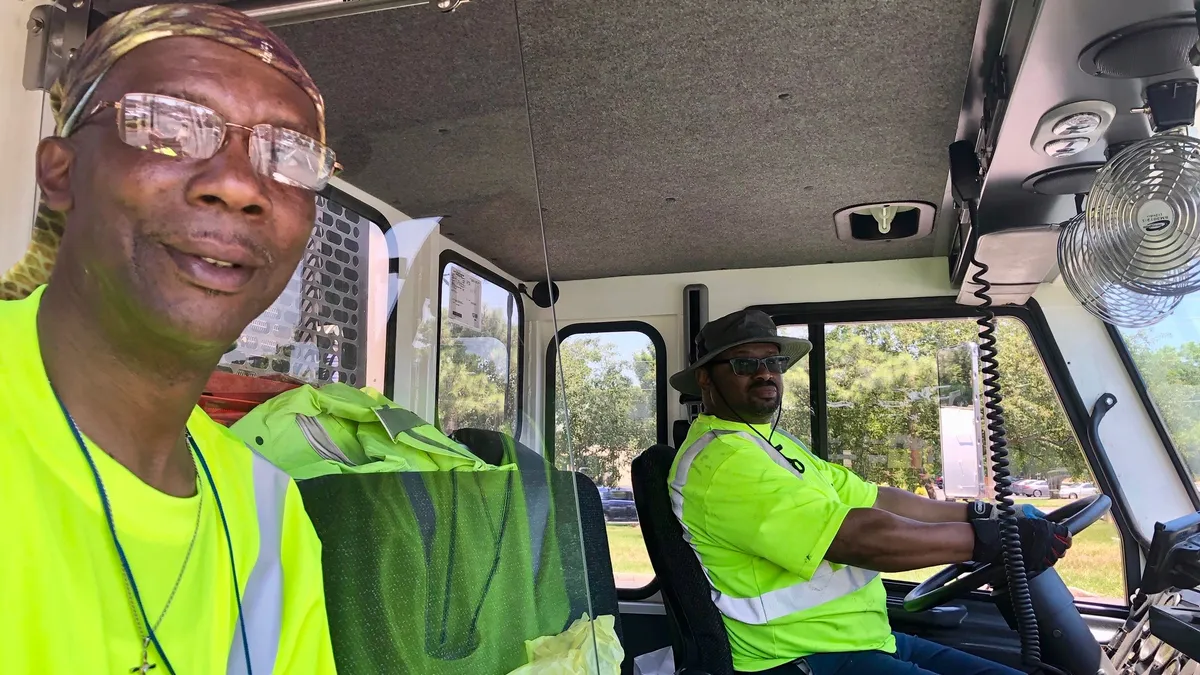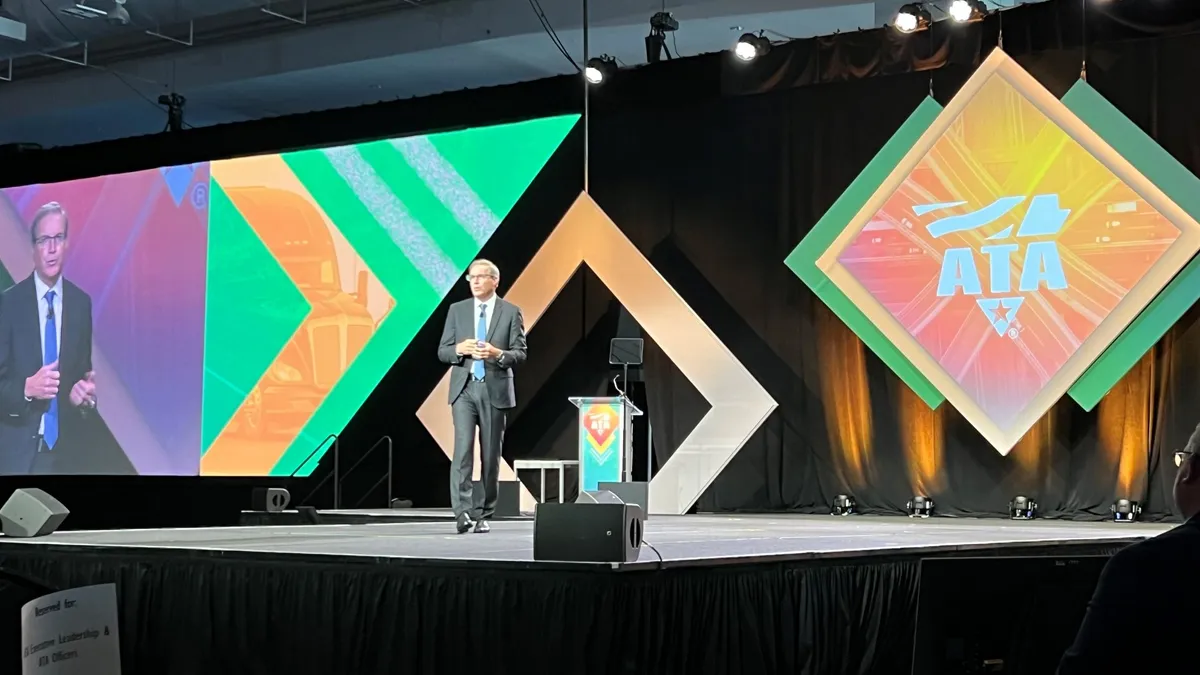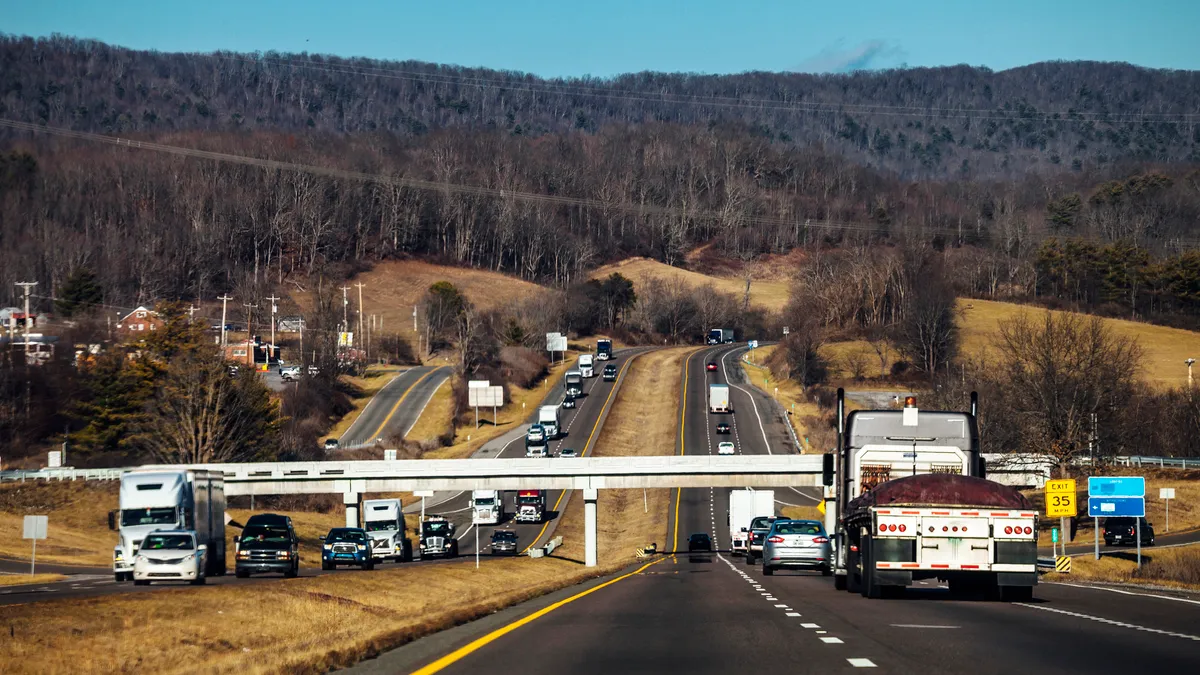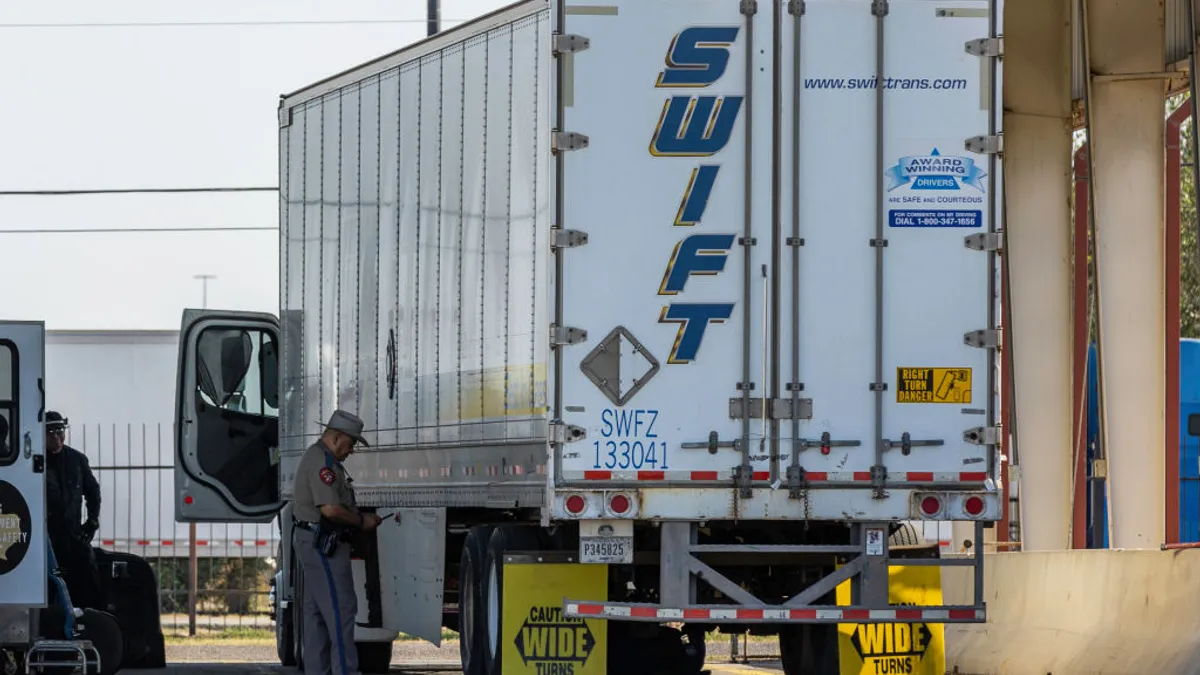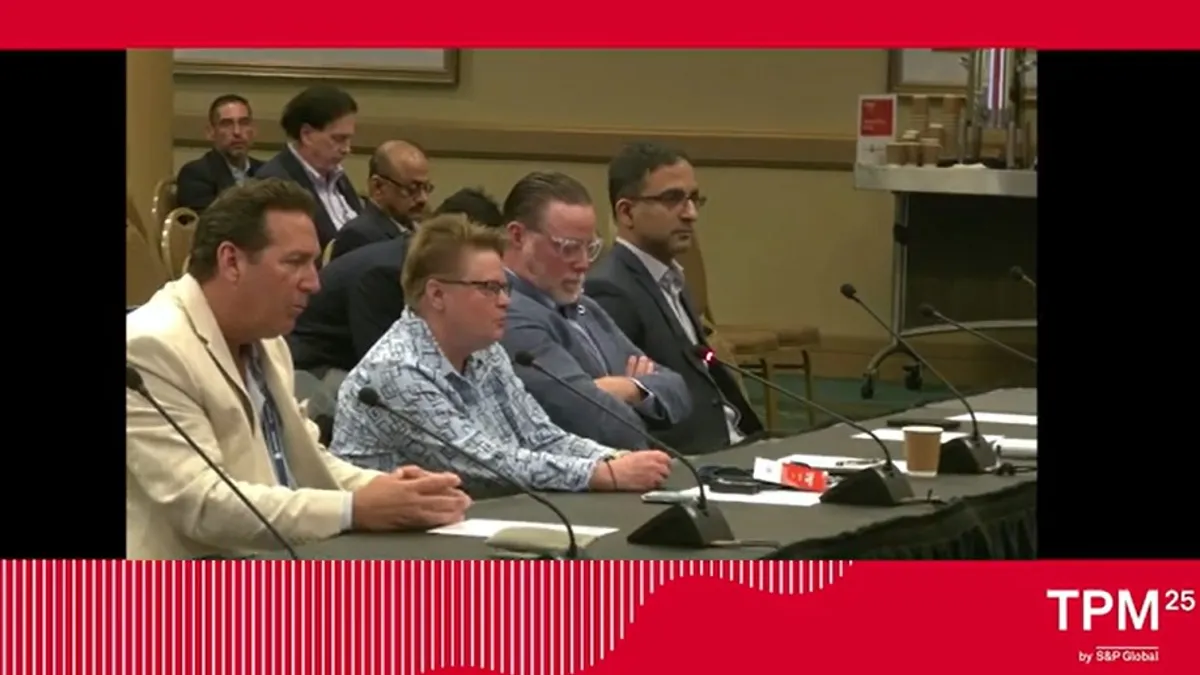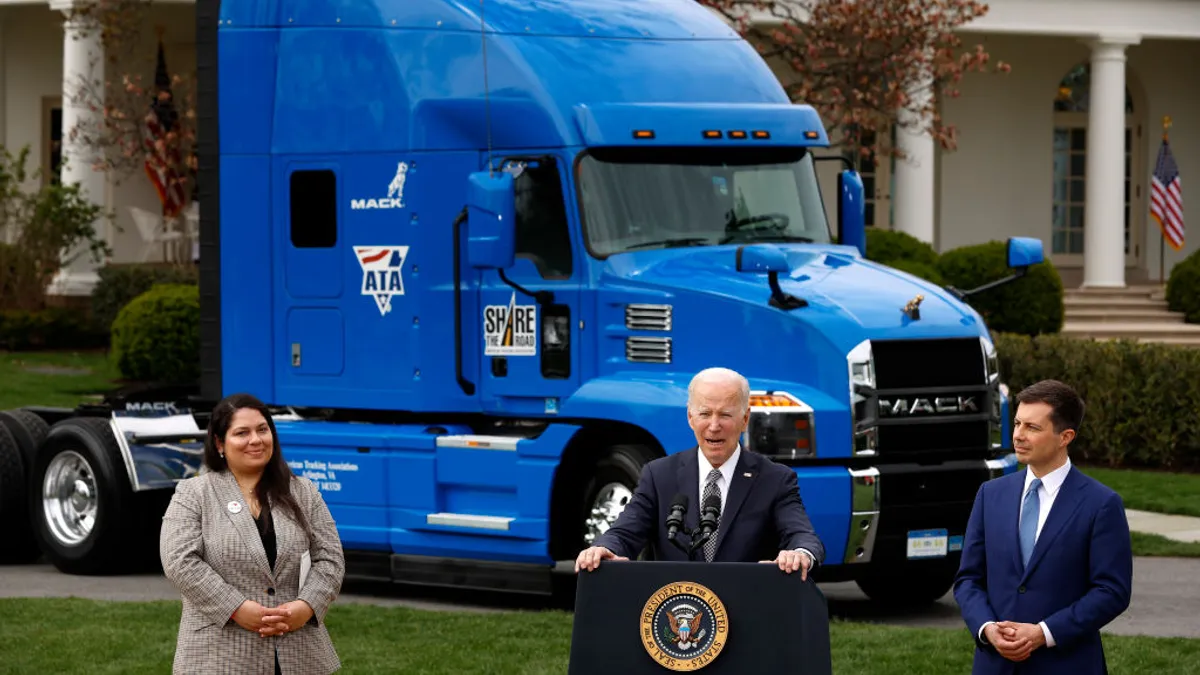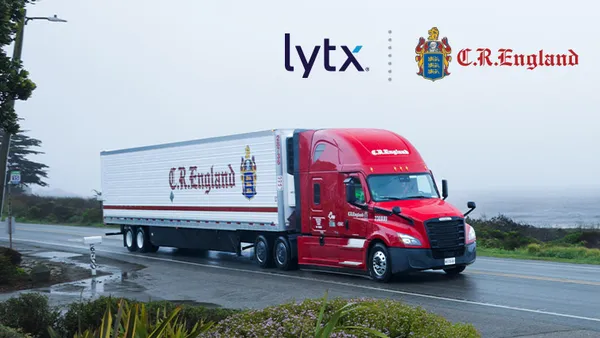After North Carolina issued a statewide stay-at-home order in response to the COVID-19 pandemic, Charlotte city officials worked on devising ways to keep essential workers safe. They sought sufficient quantities of soap, hand sanitizer, disinfectant and personal protective equipment (PPE) for employees, and they also devised a new solution for distancing limitations in waste-collection trucks.
Keeping crews safe when two or three people often ride side-by-side in a cab in a team driving scenario was a concern. The director of Charlotte's Solid Waste Services Department came up with the idea of installing a partition and took it to Leron McIver, the city's fleet and facilities manager, for consideration.
"We held a round-robin," McIver told Transport Dive sister publication Waste Dive, "to discuss issues: hazards, materials… We played with the idea of magnets [to hold panels in place], but we shelved that idea."
Instead, the city hired an engineering firm. After measuring the trucks, the firm made mock-ups out of a "Plexiglass-like material" that can be bolted in. "We built a bracket and screwed in the partition," McIver said. The removable panel can be installed in only seven minutes.
These "sneeze guards," as McIver calls them, were installed in Charlotte’s entire primary fleet of 57 Crane Carrier rear loaders and some reserve trucks.
Concerns over visibility
When many Autocar customers turned to the manufacturer for a similar product, a spokesperson said the company was among the first to introduce a partition for cabs. Known as a custom manufacturer, Autocar designed a Plexiglass divider that can be retrofitted in its cab-over models.
"We addressed it early on, based on customer requests," said Tim Thornton, VP of strategy and commercialization at Autocar, emphasizing the company’s focus on driver safety.
Reacting quickly, Autocar’s engineering staff created a product that went from concept to delivery in two weeks. Because the company custom engineers all trucks to meet clients’ needs, Thornton said, it was able to quickly shift to designing a prototype that addressed fit, form and function.
"We built a small run at first," he said. Since then, Thornton reported this doesn’t seem to be moving toward a widespread trend. But if Autocar gets more requests, the company would perform an analysis to look at function and design more thoroughly, because initial feedback indicates some issues with glare. "We would do more extensive studies and design work to meet market need if we were going into full production. You learn things in situations with a broader application and make adjustments."
Others in the industry similarly noted this approach has not yet become widespread and shared concerns around glare.
"We are aware of a few communities that have installed plastic shields in the cab as a way to reduce the spread of COVID-19," said David Biderman, executive director and CEO of the Solid Waste Association of North America. "However, others who have tested it are concerned that it reduces visibility for the driver and creates glare issues in the cab."
McIver acknowledged that was an issue but said Charlotte’s chosen engineering firm made adjustments to help reduce glare and improve visibility. "The shield is cut back so it won’t impact the view of the passenger mirror," he explained. "The driver doesn’t have to look through the shield to see the mirror."
However, some safety professionals believe a shorter panel is less effective against the novel coronavirus. "Partitions in truck cabs can be useful to help prevent spread of virus, but would be limited by how complete the barrier is," said Peter Dooley, senior project coordinator with the National Council for Occupational Safety and Health (COSH).
From Plexiglass to PPE
In accordance with National COSH recommendations, Dooley suggested including PPE, such as respirators, gloves, sanitizer and access to washing facilities, as "part of a complete program to identify and control infection exposure." "This would include a written program that has involvement of workers to identify exposure risks and solutions to reduce risk," Dooley added, and "[COVID-19] testing, paid sick time and training need to be part of a complete program."
Early on in the pandemic, fleets struggled to acquire sufficient PPE for drivers and other front-line workers in the trucking industry, but they've emphasized safety and trained drivers on protecting themselves and cab cleaning protocols. The American Trucking Associations (ATA) and state affiliates have helped distribute PPE to drivers.
"Having two occupants in a truck cab poses a significant risk for virus transmission, due to confined space with close distance," Dooley said.
He recommends adding testing to screen infected workers and increasing airflow – by opening windows, for example – in addition to controls like the plastic barriers.
Charlotte has incorporated a range of changes regarding PPE and cleaning. McIver said the Solid Waste Services Department has issued all employees nitrile gloves, five types of work gloves, face shields, face masks, Tyvek suits, hand sanitizer and Clorox wipes. They also hire an outside vendor to disinfect trucks and facilities daily, stagger shifts and take temporal scans at multiple clock-in stations. Because of this diligence, he said, they’ve had an “extremely low infection rate.”
While these safety measures have been "extremely expensive," McIver said the city wanted to show the employees that "we’re in this with them.” Employee feedback about the sneeze guards has been positive, with employees viewing them as a "benefit, not an obstruction" and Charlotte will likely continue using them even after the pandemic ends, he said.


